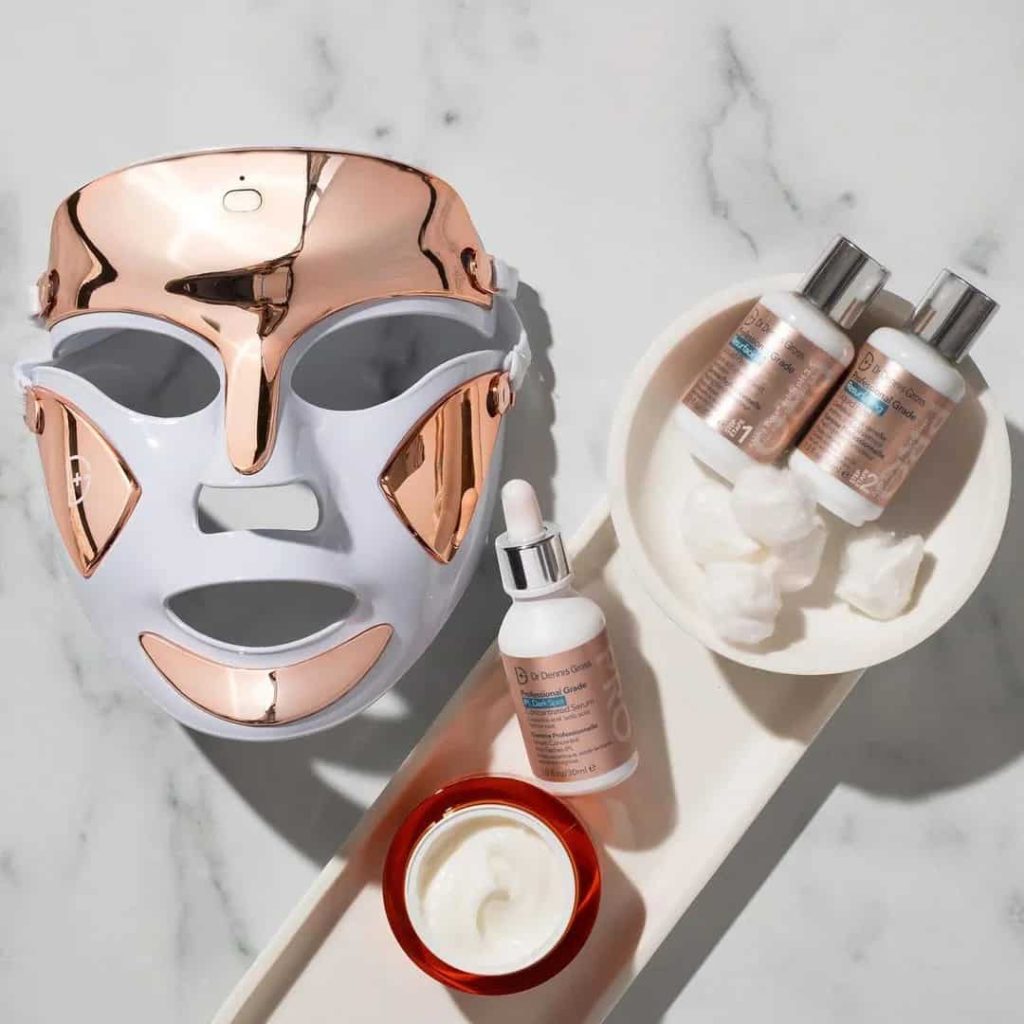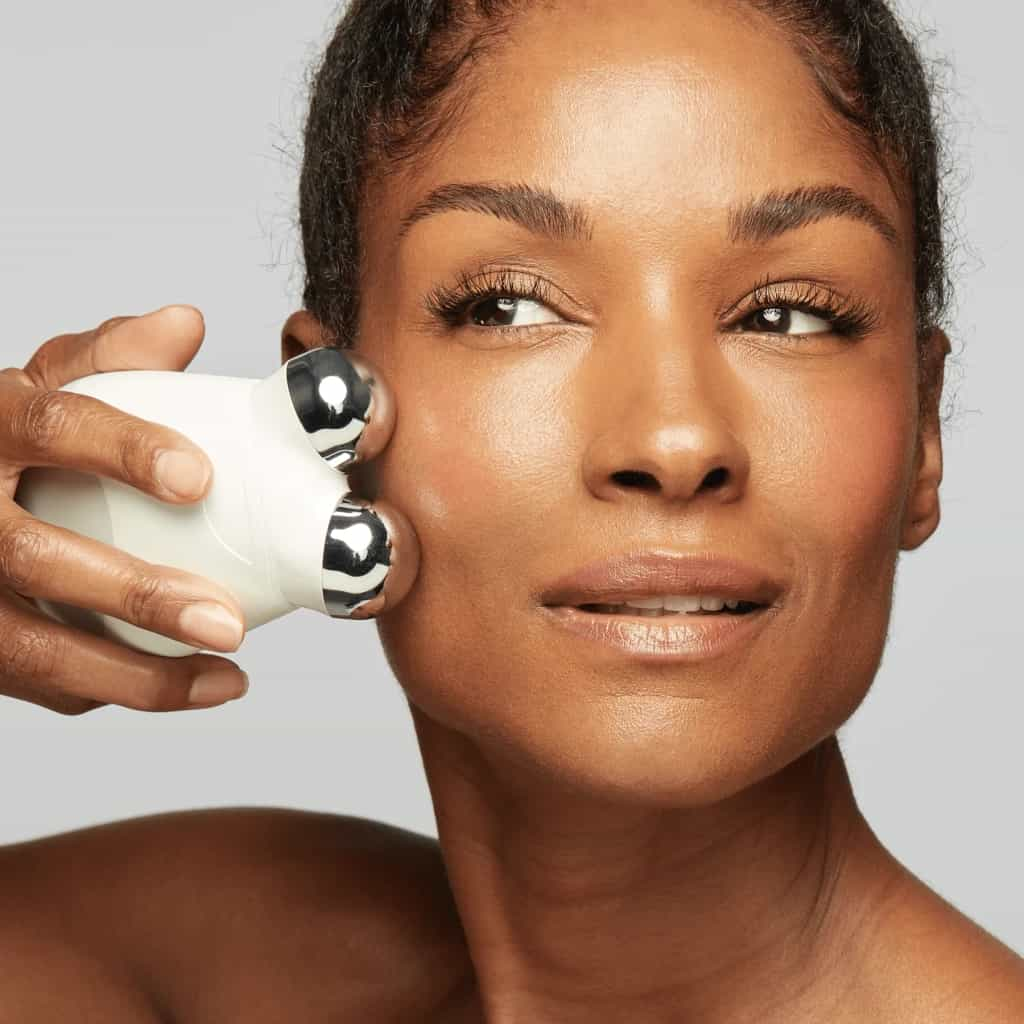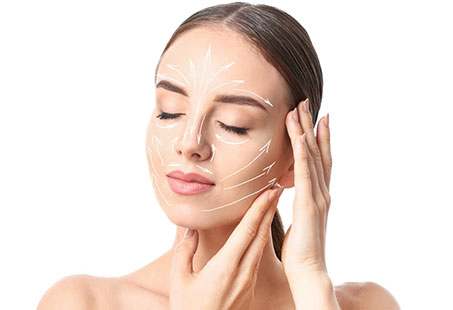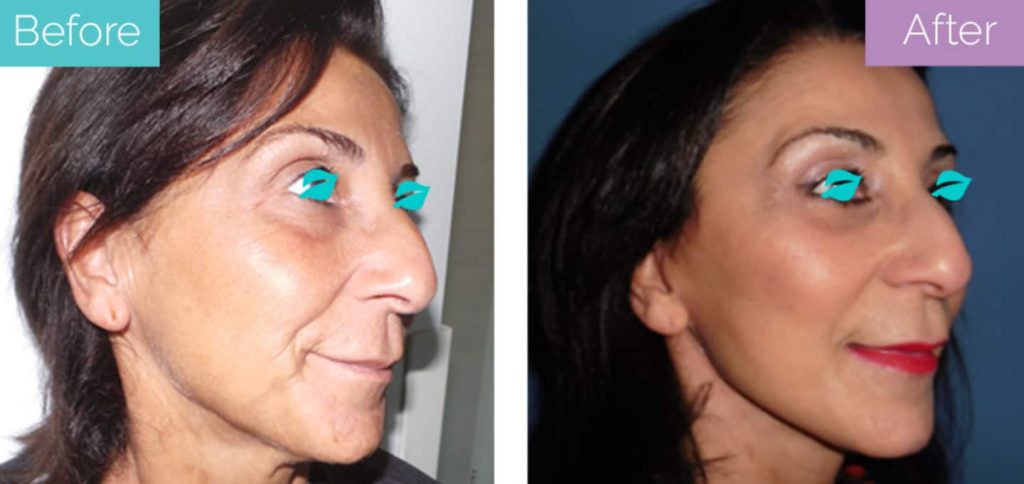A natural facelift, as the name suggests, refers to the lifting of the face by more “natural” means.
It involves the use of microcurrent devices, LED light masks, facial massages, and facial exercises to do the trick.
Only skin ageing is more complex than something you can fix with a few non-invasive devices, hand movements, or kitchen staples.
Still, many people swear by these home remedies for lifting the face naturally. While some research supports these claims, this kind of facelift isn’t for everyone.
What Is A Natural Facelift?
All natural facelift techniques aim to stimulate collagen production and/or tone facial muscles.
So, the former would replenish collagen lost naturally to ageing, while the latter would thicken muscles that naturally atrophy as we age.
And there are a few devices that can do that. For instance, LED light masks can promote collagen production in the skin while improving blood flow. In fact, it’s been in use since the 90s to help heal the wounds of Navy SEALs in the US.
A review published in the Journal of Clinical and Aesthetic Dermatology concluded that LEDs could help with different skin concerns, such as wrinkles and fine lines.

However, things become murkier when it comes to facial exercises and microcurrent devices.
As far as facial exercises are concerned, there’s a huge controversy around them. Celebrity endorsement aside, there’s no solid research showing these actually work.
In fact, different researchers have reported these facial exercises can have the opposite effect. According to them, repetitive movements can contribute to wrinkles, sagginess, and loss of skin elasticity.
Now, with microcurrents, the problem is more or less the same. These devices claim to stimulate the muscles and the skin. With that, they say your muscles will thicken up, and your skin will produce new collagen.

But there just isn’t enough evidence to say either of it’s true. You might notice a difference in your skin, or it might turn out to be a complete flop. If it’s the latter, you’ll already have wasted a lot of money.
Who Can Get A Natural Facelift?
A natural facelift can be considered by anyone who has mild signs of ageing. Collagen production can help firm up and tighten the skin. However, the same cannot be said of facial exercises.
Still, even if you’re losing an LED mask, it’s important to find one that’s approved by the FDA.
Also, when using the device, protect your eyes by wearing goggles, as long-term exposure could damage them. And if you have an active skin problem, you should consult your dermatologist first.
Why Should You Get A Natural Facelift?
Natural facelifts can be worth consideration because they can:
Give Natural Results
Some people are uncomfortable with getting a surgical facelift because they fear unnatural-looking results.
This can happen if an inexperienced removes a little too much of the skin tissue, so when the skin is stitched back up, it looks too pulled back.
To avoid the stress of going through something like this, you can consider the more natural ways of getting a facelift. Since its results are likely to be quite subtle, it’ll look more natural.
Release Stress From The Skin
While facial exercises may or may not lift your skin, they can help provide some stress relief.

A review published in the International Journal of Environmental Research and Public Health even found that facial exercises can help reduce the level of chronic stress and depressive symptoms.
Reduce The Amount of Sagging In Your Skin
If you have mild skin sagging, using at-home devices that promote collagen production might be a good idea. However, keep in mind the effects might be barely visible.
The best device to use for this would be an LED mask since it uses heat energy to improve the quality of the skin.
When Do People Typically Consider A Natural Facelift?
Someone who’s just started noticing the early signs of ageing on their skin, such as:
- Age spots
- Mild wrinkling
- Fine lines
- Hyperpigmentation
- Slight sagging of the jawline, mouth, and neck skin
It could be some in their early 30s or well into their 40s or 50s when the wrinkling and sagging become way more noticeable.
If it’s the latter, keep in mind that a non-invasive treatment can’t get rid of the hanging skin, tighten the muscles or sculpt the underlying fat like a surgical facelift.
What Does A Natural Facelift Treatment Involve?
A natural at-home facelift usually involves one or more of the following:
Microcurrent Device
Usually, the microcurrent devices are used as follows:
- Wash your face to remove any impurities and pat it dry.
- Apply a serum, gel, cream, or mask (usually recommended by the manufacturers).
- Turn on the device (might have to adjust the intensity of currents).
- Glide it across your neck, forehead, jawline and cheeks.
- You might have to keep it in place per area and wait for a beep or two.
Make sure to check out the instructions provided by the manufacturer. Usage time and frequency can vary accordingly. However, usually, it’s pretty quick, between 5-15 minutes.
Some say that you’ll see results right away, but, of course, it can vary.
LED Light Mask
Using an LED light mask at home is simple enough.
It usually comes with a remote control so you can adjust the setting after plugging it into the USB port.
Some masks also come with microcurrent points that you have the option to fit into the mask.
Once that’s done, you can put the velcro strap into the back of the mask and put it on your face.
It usually has to be worn for a few minutes, 2-3 times per week (check the device’s instructions, though).
Facial Massage
For a facial massage, you’ll only need your hands. But make sure you clean them because you’ll be really rubbing them into your skin.
It usually begins with the “draining of the lymph” and stimulation of the blood flow in the face. It’s done as follows:
- Using one hand, move the fingers in a circular motion against the skin of the neck and the jawline.
- Glide the fingers along the skin so the lymph moves downward or outward away from the face.
Once that’s done, you move on by going over each area. For the chin, it can be like this:
- Gently knead the jawline in a circular motion. You can also pinch your skin while doing this.
- Hold your jawline between the curve of your hand, and using your fingers, pull the skin backwards.
- Place your thumbs under the chin and then move them across the length of your jawline all the way to the ears.
For the lower half of the face, you can:
- Place your thumbs under your chin and use your fingers to circle the cheeks.
- Use your fingers to push the skin upwards.
- Draw small circles around your mouth to smooth out the marionette lines.
- Take your lips between your fingers and gently stretch out small sections of them.
- Hook your index fingers and make small circles in front of the ears.
- Flick the cheeks up with the fingers of both your hands.
For the upper half of the face, it can be like this:
- Swipe the index finger across the eyebrow and then move it to the lower curve of the eye.
- Using your fingers, pull the skin of the forehead upwards and outwards towards the hairline.
- Draw “8” figures in the skin around the outer corner of the eyes (allegedly, for crow’s feet).
How often do you need to do it, or when you’ll see results? No one can say for sure.
Also, if doing it with your hands feels a bit tedious, facial massage devices are also available.
Just keep in mind it can go either way (or no way). So, it’s best to talk to a dermatologist first.
Facial Exercise
Exercises that claim to lift the face can range from making weird smiley faces to holding your breath.

They can involve:
- Moving your head up and down.
- Make an O-face with the lips or cheeks pulled in.
- Making a puckered (fish-like) face and holding the pose for 5-10 seconds.
Again, to reiterate, there’s no guarantee that these will work.
What Is The Difference Between A Natural Facelift And A Surgical Facelift?
Natural facelifts are non-invasive methods of tightening thin skin, while surgical facelifts are invasive cosmetic procedures.

The latter involves going under the knife, where incisions are made to readjust the fat and muscles of the face.
Here’s a summary of the differences between the two:
| Non-Surgical Facelift | Surgical Facelift | |
| Procedure | Lift the skin with exercise, massages, infrared light or microcurrents | Smooth and tighten sagging skin by cutting out excess skin tissue, rearranging fat pads and tightening the facial muscles |
| Good candidates | Early signs of ageing and mild skin sagging | Moderate to severe sagging and wrinkles |
| Time Required | 5-20 minutes | 2-3 hours |
| Number of Sessions | Depends on the technique. Massages and exercise are ongoing once a day or 2-3 times per week. Devices can require daily use for a certain period of time. | One |
| Results | Permanent and immediate (according to anecdotal evidence and device manufacturers) | Permanent and immediate |
| Downtime | None | 2 weeks |
| Cost | £150-£250 (for the devices) | £7,000 in the UK £2,000 in Turkey |
How Can A Natural Facelift Massage Help You?
A natural facelift massage can help drain the lymph from the face and even stimulate blood circulation there.
Additionally, they can be quite relaxing, so you can consider trying them out.
However, if you’re trying to lift your face, just remember there’s no evidence that a face massage can actually do that for you.
How Often Should You Get A Natural Facelift?
Massages or exercises cannot be prescribed with a standardised frequency that is guaranteed to be effective or safe. That’s because there isn’t sufficient scientific evidence on them.
Anecdotally, you’ll hear people recommending them one or twice a day for 1-3 times per week.
And with the microcurrent and LED mask, the recommended usage frequency comes down to the manufacturer. Usually, it’s for 5-10 minutes, a few times a week.
How Much Does A Natural Facelift Cost?
Natural facelift devices with microcurrents and LEDs usually cost around £150-£250 in the UK. The price can vary depending on whether or not it’s FDA-approved or is from a reputable company.
Face massage devices, on the other hand, can be anywhere from £50 to £300. Although, you can also just use your hands.
Natural Facelift Alternatives: What Are They?
Other than a surgical facelift, you can also have the following for a non-surgical facelift in London:
- Botox
- Dermal Fillers
- Fat injections
- Fractional laser
- Radiofrequency therapy
- Ultrasound therapy
These are all available as in-office treatments. However, you’ll get more noticeable results with them than with at-home facelifts.
On the other hand, if you’re still wondering how to facelift naturally at home, using retinol products can prove to be the most effective. It actually boosts the production of collagen in the skin.
Additionally, you should always make sure to wear your sunscreen and eat healthy foods.
Longevita Has Experienced Surgeons For Your Facelift Needs
Longevita has internationally acclaimed surgeons with over a decade of experience performing surgical facelifts. They’re also members of the International Society of Aesthetic Plastic Surgery (ISAPS).
Depending on your treatment goals and expectations, they can prepare a customised treatment plan for you. And if you have any questions about this surgery, don’t hesitate to get in touch with us.
Reviewed and Approved by Prof Fuat Yuksel
FAQs
Will a natural facelift hurt?
As long as you have the right technique, a natural facelift shouldn’t hurt. Although with microcurrent devices, you might experience pain if you don’t apply their serum or gel on your face.
Do natural facelifts work?
Natural facelifts that don’t promote collagen production are unlikely to work. For that reason, you might not notice much or any difference from facial massages, exercises or microcurrent devices.
What is a 20-minute facelift?
A 20-minute facelift can be anything from an exercise routine or a device that claims to lift the face in 20 minutes.




